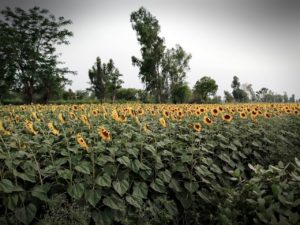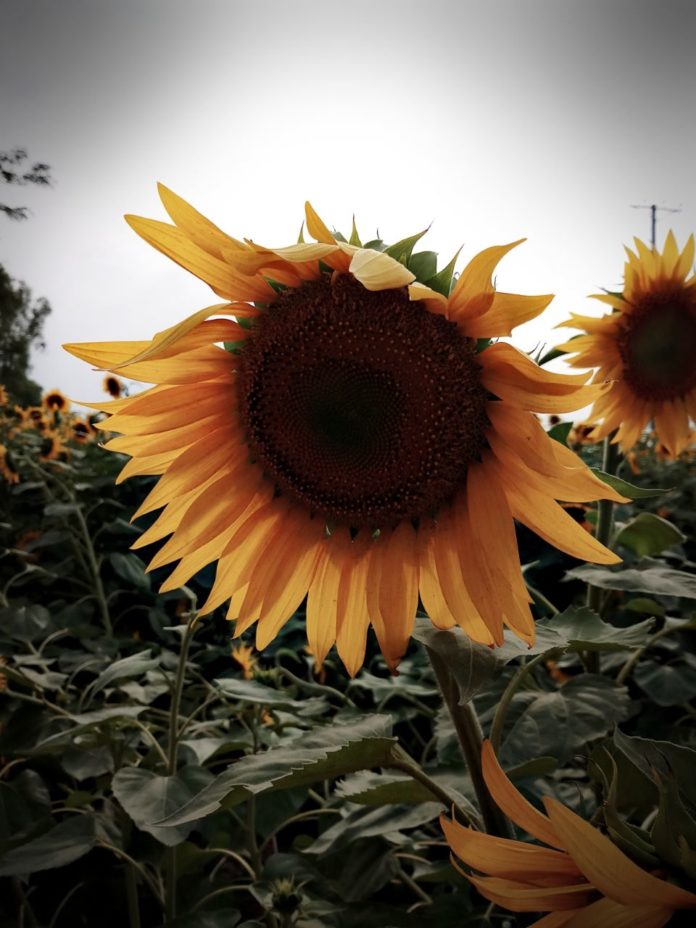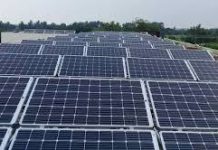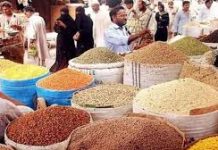By Muhammad Luqman
The field full of plants crowned by glittering yellow flowers is a source of hope and accomplishment for the farmer Ahmad Hussain in central Pakistan district of Nankana Sahib as the oil seed sunflower crop is nearing harvest.
“ I have cultivated sunflower first time in my life; Favourable weather is going to help me in getting good harvest, ,” Hopes Ahmad Hussain who has contracted with an oil solvent unit for the sale of the produce.
Sunflower is a sensitive crop that usually gets maturity in 120 to 130 days but its maturity duration depends on the variety and weather.
Experts believe that sunflower in the Central Pakistan would become completely ripe towards the end of May .
“Before harvesting , farmers should visit the field to see whether it was 100 percent ready for harvest,” says Dr. Nayab Haider, Director General , Punjab Agriculture Extension.
The crop gets ready for harvest when the back of the flowers attains golden colour, half portion of the green leaves fall down and there is no milkier complexion of the seeds.
Farmers, the edible oil crop experts advise, should pluck sunflowers by scythe a hand driven tool traditionally called daranti . These flowers are spread on a platform some one foot above the ground for two to three days.
Then these flowers should undergo thresher machine process for separation of seeds. Farmers can also beat flowers by wooden sticks in case of smaller production.
The sunflower seeds are then dried in Sunlight. Combined harvester is applied in case of higher production obtained from a vast area.
 Internationally speaking, sunflower is one of the four most important annual crops in the world grown for edible oil. In Pakistan, it was introduced about half century ago, but it has not been able to be the first choice of the growers especially in the central Pakistan Punjab province due to various socio-economic constraints. Punjab province had set a cultivation target of 200,000 acres this year to get a total production of 137661 tonnes of seed.
Internationally speaking, sunflower is one of the four most important annual crops in the world grown for edible oil. In Pakistan, it was introduced about half century ago, but it has not been able to be the first choice of the growers especially in the central Pakistan Punjab province due to various socio-economic constraints. Punjab province had set a cultivation target of 200,000 acres this year to get a total production of 137661 tonnes of seed.
After the decision to phase out Palm-oil based hydrogenated vanaspati ghee in Punjab over the next two years, importance of local edible oil production has attained great significance. Sunflower, Canola and cotton are the major sources of local oil production which presently contribute only 33 percent of the total edible oil demand in Pakistan. About two third of the demand is met by the import of palm oil from Malaysia, Indonesia and other countries.
Initially, the area of adaptation for this crop was in the cotton belt (Vehari, Lodhran, Bahawalpur, Umerkot) and rice growing areas of Sialkot and Badin in Punjab and Sindh, respectively. But now the crop is being introduced to other parts of Pakistan too. The crop is grown in spring as well as in autumn. The average yield in Pakistan is 1.3 tons/ha. Almost 99% area is under hybrids imported by different multinational seeds companies. However, local hybrids are also available and area under them is increasing with the time. It has good prospects as intercrop with sugarcane, if suitable hybrids and production technology is available. Sunflower is an important oilseed crop and is successfully grown under different climatic conditions of the country, i.e., in the warm and harsh conditions of southern part of the country to mild and cool climate in the north. It has great potential to bridge the gaps between the production and consumption of edible oil. More and more farmers may adopt sunflower as a major Rabi season crop, if federal and provincial governments come up with more incentives for the local edible crops. (Also see the video of sunflower crop in Punjab, Pakistan)















